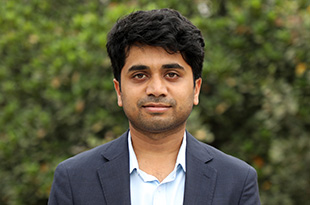Journal Article: 'A spatio-temporal statistical model to analyze COVID-19 spread in the USA' - Prof. Soudeep Deb

Abstract: Coronavirus pandemic has affected the whole world extensively and it is of immense importance to understand how the disease is spreading. In this work, we provide evidence of spatial dependence in the pandemic data and accordingly develop a new statistical technique that captures the spatio-temporal dependence pattern of the COVID-19 spread appropriately. The proposed model uses a separable Gaussian spatio-temporal process, in conjunction with an additive mean structure and a random error process. The model is implemented through a Bayesian framework, thereby providing a computational advantage over the classical way. We use state-level data from the United States of America in this study. We show that a quadratic trend pattern is most appropriate in this context. Interestingly, the population is found not to affect the numbers significantly, whereas the number of deaths in the previous week positively affects the spread of the disease. Residual diagnostics establish that the model is adequate enough to understand the spatio-temporal dependence pattern in the data. It is also shown to have superior predictive power than other spatial and temporal models. In fact, we show that the proposed approach can predict well for both short term (1 week) and long term (up to three months).
Authors’ Names: Siddharth Rawat and Soudeep Deb
Journal Name: Journal of Applied Statistics
URL: https://www.tandfonline.com/doi/full/10.1080/02664763.2021.1970122
Journal Article: 'A spatio-temporal statistical model to analyze COVID-19 spread in the USA' - Prof. Soudeep Deb
Abstract: Coronavirus pandemic has affected the whole world extensively and it is of immense importance to understand how the disease is spreading. In this work, we provide evidence of spatial dependence in the pandemic data and accordingly develop a new statistical technique that captures the spatio-temporal dependence pattern of the COVID-19 spread appropriately. The proposed model uses a separable Gaussian spatio-temporal process, in conjunction with an additive mean structure and a random error process. The model is implemented through a Bayesian framework, thereby providing a computational advantage over the classical way. We use state-level data from the United States of America in this study. We show that a quadratic trend pattern is most appropriate in this context. Interestingly, the population is found not to affect the numbers significantly, whereas the number of deaths in the previous week positively affects the spread of the disease. Residual diagnostics establish that the model is adequate enough to understand the spatio-temporal dependence pattern in the data. It is also shown to have superior predictive power than other spatial and temporal models. In fact, we show that the proposed approach can predict well for both short term (1 week) and long term (up to three months).
Authors’ Names: Siddharth Rawat and Soudeep Deb
Journal Name: Journal of Applied Statistics
URL: https://www.tandfonline.com/doi/full/10.1080/02664763.2021.1970122
